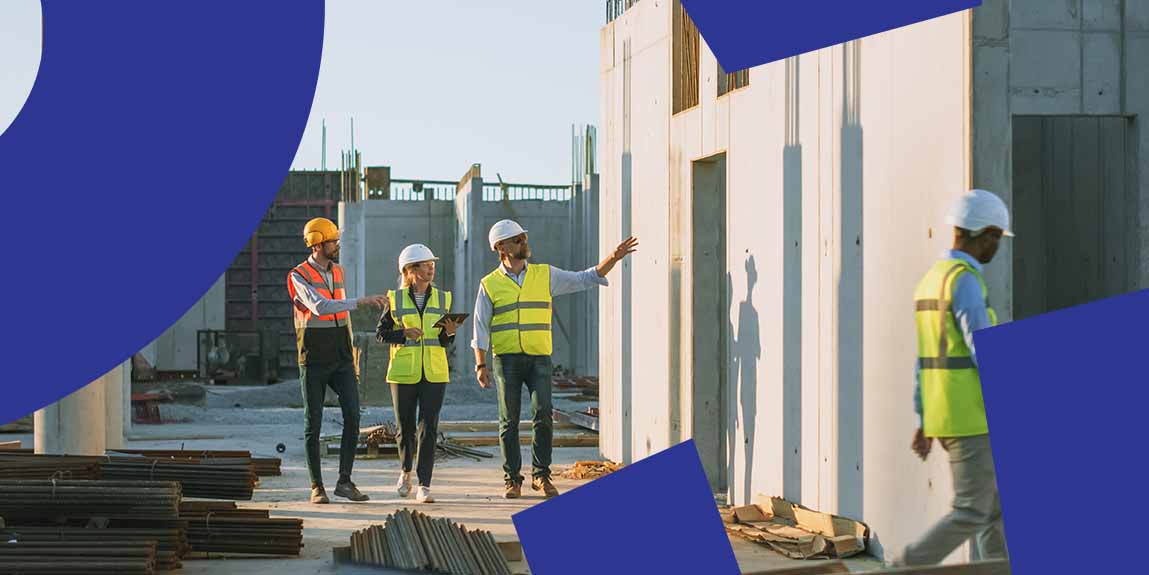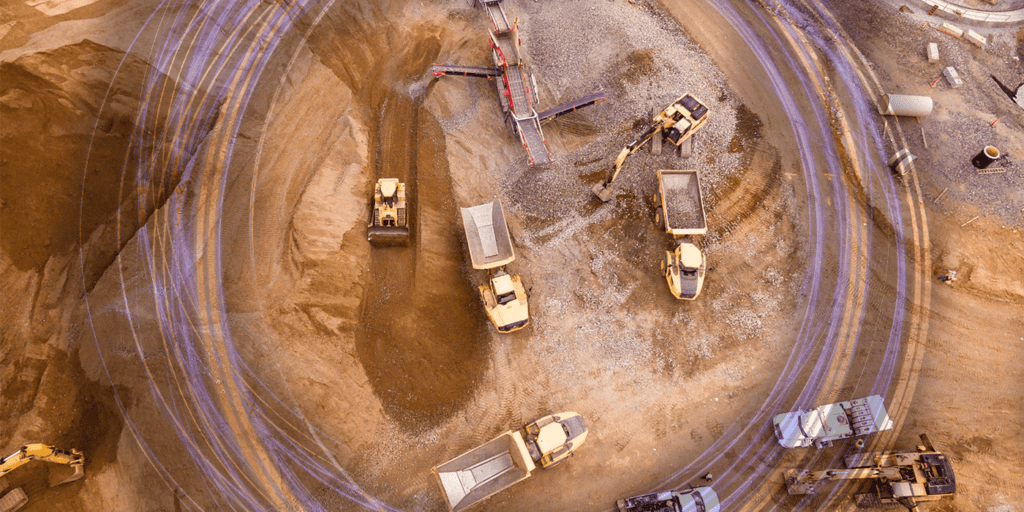

The coalition of interests that has swung momentum against downtime in construction over the last few years has become powerful precisely because it has developed organically and is completely aligned with outcomes that best serve the industry.
And that was evident at Trackunit Next when a high-level lineup in one of the afternoon panels (see here for other panel discussion) got together to bounce ideas, state their positions and lay on the table what they hoped would be the next steps for construction in the perennial battle against downtime.
Bechtel’s Cody Meeker was first to the crease with an impassioned plea for everybody in construction to strengthen its efforts on sustainability, particularly given the UN’s 2030 targets on emissions reporting.
“As a global organization, a key effort is spreading the word about AEMP 2.0, to provide a single data platform to monitor our entire fleet and use data analysis to help reduce our carbon footprint,” said Meeker, Bechtel’s global fleet manager. “As a contractor we want to be predictive and not reactive. Having good data analytics, allows us to predict risk and adapt and reduce it.
“ESG and decarbonization is a major discussion point currently, and we are working to determine a good industry standard for a carbon intensity metric.”
Cody Meeker, Bechtel
“One example is, we are using technology to analyse equipment fuel use and CO2 emissions and place a monetary value on those results,” said Meeker. “Money is a great motivator for behavioural change. Using data, we can run scenarios and provide predictable outcomes for our projects.
“ESG and decarbonization is a major discussion point currently, and we are working to determine a good industry standard for a carbon intensity metric,” Beeker added. “Currently there are many ways this is defined, and so the industry needs a standard metric.”
United Rental’s John Mongan echoed that sentiment using a safety lens to focus on how better technology can strengthen the battle on downtime by reducing the amount of incidents on construction job sites and make the use of machines more efficient.
“A zero-incident site is the goal, and it will take a combination of factors,” said Mongan. “It has to start with a cultural change on the work site.
“Making safety the primary KPI across the industry would drive investment and activities around accident prevention.”
Peter Malmberg, Epiroc
“Technology will help, which will require an increased number of sensors on machines such as video, radar and access management,” said United Rentals’ director, advanced concepts. “Moreover, the commitment has to be there to ensure workers are trained and that proper walk arounds with checklists take place and are recorded, also possibly rewarding workers for taking the time to work systematically and safely.
“I believe the industry as a whole has a way to go to making that cultural shift,” he said.
Epiroc’s Peter Malmberg was also keen to emphasize how safety sits at the head of its agenda and focused on the importance of data as a means of leveraging better safety solutions.
“Making safety the primary KPI across the industry would drive investment and activities around accident prevention,” said the SVP digitalization at the Stockholm-headquartered manufacturer. “We collaborate with customers to select hard targets including safety and productivity features on equipment.
“Furthermore, developing systems utilizing AI, sensors and cameras to identify and eliminate risk around machines are considered in commissioning new equipment designs,” he said. “AI and other technology are fundamental to the productivity improvements around the industry. Additionally, technology is really allowing the industry to effect positive change in terms of the environment, sustainability and safety, and match these to productivity improvements.
“We are about to start testing cameras with AI on our sites, which should provide predictable outcomes,” added Malmberg. “In this way we can see safety really improving at the site level. After all, we want to see every worker that clocks in, return home safely at the end of their shift. That’s a fundamental truth.”
“A zero-incident site is the goal, and it will take a combination of factors. It has to start with a cultural change on the work site.”
John Mongan, United Rentals
Bechtel’s Meeker agreed and pointed towards the Virginia-headquartered contractor’s MEPI — mobile equipment, personnel interface — strategy “dedicated to improving the interaction between machine and operator to eliminate accidents”.
It addresses behaviour, technology, processes and procedures in conjunction with cultural and certification considerations,” he added. “We are known for our very strong approach toward reducing the causes of jobsite accidents which is key to eliminating downtime.”
Malmberg said Epiroc was heavily-.focused on data as a means of transforming the production processes from inception through R&D and into engineering, shortening, he said, “the development cycle and time to market”.
“It offers a new layer of communication and visualizing data increases the support we offer customers by sharing data and insights to better understand the machines,” he said. “Previously, there were recommended service routines. Today with data insights, customers can receive live machine updates that will reduce the risk of breakdowns and unexpected costs and downtime.”
Mongan too was keen to emphasise the importance of technology and AI in addressing many of construction’s major points including safety and better efficiency.

“This can provide the basis to organise the site work flows to remove risk scenarios and increase productivity,” he said. “ It is better to gain early understanding of the situation and remove the risk, than to use video after an incident has happened, so we need to integrate this capability into our operations on site.”
And all three were united in their conviction that construction could be about to usher in a new era on the back of technological innovations that foster transparency, data sharing and harmonization, and greater connectivity.
“For the industry as a whole to benefit we need companies like Trackunit, that are across many platforms and equipment so that OEMs, rental, contractors, software developers and supply chain can use the same data and create consistent outcomes for better insights,” said Mongan.
“AI and machine learning is driving our ability to better predict outcomes across all types of technology be that mobile, wearables, real time communications and of course modelling on digital twin,” said Beeker. “More of these are incorporated now and are working well.”
“All our systems must facilitate the latest technology to be easy-to-use and also bridge the operator competence gap,” added Malmberg. “Machines must be more intuitive with the first priority being safety.”
Gain more insights on sustainability in construction by downloading our ‘Constructing a Better Future’ report here.

